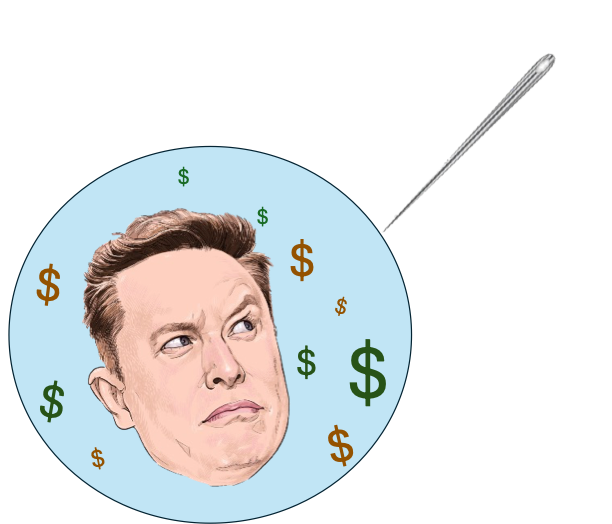Updated: Mar 10, 2022
… A super honest interview with James Purcell!

James Purcell is the Group Head of ESG, Sustainable and Impact Investing for Quintet Private Bank. But I know him as the person who first explained greenwashing to me. In a not-quite-hitting-the-mark hipster café in Zurich, he calmly revealed that the sustainable ratings are not what they seem. At first, I didn’t believe him. I wondered if my former-colleague had cracked. Or if he was just the most miserable guy ever.
But then I did some research. And I realised HE WAS RIGHT. Like, earth-shatteringly, 100%, mind-blowingly right. I have not stopped banging on about it since.
So here it is! I’ve caught up with Purcell again, to ask more questions about sustainable investments . Here’s his super honest take 👇👇
🌱 The evolution of sustainable investments 🌱
I first met you in 2017 when sustainable investments were considered to be niche, or alternative. Now, of course, just four years later, sustainable investments are ‘the new normal’. Why do you think this is?
With all the intermediaries, jargon and products, we sometimes lose sight of what investing is all about. Investing reflects the world around us: we purchase shares and bonds (and their many fancy derivatives) in the companies that serve and supply us.
Those companies operate as part of society and therefore reflect the values and interests of their employees, customers and other stakeholders.
Consequently, as sustainability has penetrated the public consciousness -whether through climate change protests, evolving social trends and our understanding sexuality and gender, or pushback on unsavoury practises in supply chains – it has also advanced within the financial industry.
So, yes, I agree with you that sustainable investments are “the new normal.” The investment industry is simply reflecting broader changes in society.
You’ve been building sustainable investment portfolios for around five years now, how have the holdings changed over time?
When I began, things looked rather uninspiring. People either excluded a bunch of stuff or they did “ESG integration” and embedded sustainable factors into their financial modelling. The latter supported investment returns, but it didn’t really inspire excitement or tell a great story. The words that were being used were, well, they weren’t words – they were acronyms: ESG, SRI, SI, VBI, RI.
When words were being used, they were things such as “sustainably compliant.” I don’t know about you, but acronyms and compliance aren’t going to excite the vast majority of people!
In my previous role at the world’s largest wealth manager, my boss sensed an opportunity to use our platform to change the tone of the conversation. We came up with (and/or borrowed) some really simple words to describe what we were trying to do. Investing in sustainable Leaders, in sustainable Improvers, in sustainable Themes. With that alone, communication became so much easier and more engaging.
Over the past five years, these terms have caught on. This year Amundi launched a range of Improver ETFs and Bloomberg some Improver indices. But the big development has been in what I call “Dedicated Assets” – assets that are dedicated to sustainability and are explicitly designed with sustainability as a defining characteristic. Whether green bonds or multilateral development bank debt, the product growth around dedicated assets has been superb. It has allowed investors to have far greater control over their investments and, arguably, generate greater impact.
Can you describe what a typical balanced portfolio might contain today?
I’d start by working with my asset allocation colleagues to embed sustainability considerations into the economic assumptions that underpin asset price forecasts and build a multi-asset portfolio from there. You need a solid foundation.
In terms of implementation, government bonds can be fully replaced by multilateral development bank debt, with every dollar funding sustainable development.
The green bond universe is now big enough to fully operate a developed-market investment-grade strategy in both EUR and USD.
Green bonds can also replace corporate emerging-market exposure (thanks to the innovative Amundi-World Bank IFC relationship). In high yield, the Improver strategy is a perfect fit. One makes money in high yield by improving credit fundamentals and, given the positive relationship between sustainability and corporate performance, it’s a logical place to deploy the Improver lens. Elsewhere in the portfolio, I’d keep deploying the toolkit – blending in Leader strategies to give a strong quality foundation, with more growth-orientated Thematic strategies, and the esoteric Improvement stories backed by powerful investor engagement.
😣 Addressing the criticisms of sustainable investments 😣
One of the early criticisms of sustainable investments was that the portfolios were not diversified enough, do you think that’s still the case?
I think that can still be the case when they are poorly constructed. If you operate a rules-based approach and exclude a lot of stocks or only select “the top 25%” you will end up with some large portfolio biases.
For me, sustainability is a set of principles; it’s a toolkit, a way of looking at the world.
If you deploy that with a degree of pragmatism, then you realize you have many strings in your bow – Leaders, Improvers, Themes, Dedicated Assets – with which you can build fantastic portfolios.
I’ve noticed that many ESG and sustainable funds contain fast-food, plastic polluting and fossil fuel companies. Do you think it’s viable to build a portfolio without funds, or is that really stupid?
It’s possible. For an individual investor who is very keen on making sure every holding is aligned to their values, it is an option. For a wealth manager charged with protecting and growing a client’s wealth, however, I’m not sure it’s advisable. I think it would be a little naïve to assume that “my way” of looking at sustainability is always right, or that one single firm always has the best products. The power of being open architecture and aligned with your client from an incentive perspective is that you can draw on the best of the industry to create your portfolios.
I’m also wary of purely using holding-based analysis when thinking about sustainability.
Don’t get me wrong, it’s a great tool, and in several cases the holdings you’ve listed are some combination of manager laziness and green washing. However, that need not always be the case. Sometimes, the manager is holding those stocks for a reason; there may be a powerful theory of change that can be great for people and planet.
Sometimes, a rational individual has a legitimate difference of opinion, and has weighed the pros and the cons differently to how you or I might have. Take electric cars, for example: Are they good or bad for the environment? The answer is not straightforward because supply chains are complex, as is the product lifecycle.
So yes, we can build a portfolio that reflects 100% “your views” for any investor without funds – absolutely. But each of us must also recognize the limitations of our worldview and be open to hear what others think. For me, I’m more keen to hear why a fund manager holds X, rather than stopping at the fact that they hold X.
Another criticism was that sustainable investments may not perform as well over time. Many people say that argument has been put to rest now, but what do you think? Have sustainable investments been tested enough? Are they only successful by default against stranded assets, or do they stand up on their own merits?
I think this debate is over. That has been proven by thousands of academic papers, and years of fund and index returns.
When I think about this debate, I like to pose a question: “If I had material, relevant information about a company that you are about to invest in, would you like to hear it?” Of course you would! And that’s sustainable investing.
By investing sustainably, I’m not invalidating financial analysis. I also absolutely want to read the income statement, the cash-flow statement and (most!) of the footnotes.
What I want to bring to the table is additional analysis of the intangibles.
As the stock market has shifted from being an asset-backed market (e.g. railroads, factories) to an intangible-backed market (e.g. brand value, intellectual property, network effects), sustainable factors are only growing in importance.
Of course, the biggest criticism is that many sustainable assets are not truly “sustainable”. Do you think greenwashing is on the rise? Or has it peaked already?
I’m genuinely torn on this.
On the one hand, I think the sustainable investing industry has a habit of self-sabotage. Someone comes up with a great new product or idea – great, not perfect – and half of the sustainable investment industry attacks it for not being “green enough”.
It’s a little bit like how in politics the fiercest, most antagonistic debates happen between closely aligned factions – Bolsheviks and Mensheviks, if you will.
For example, the attacks on green bonds annoy me – they are one of the fastest growing areas of (even conventional) finance and have undeniably changed mindsets, stirred corporate debate and channelled capital to green projects.
On the other hand, it’s fairly obvious that there is a good deal of green washing going on. In our industry, there is growth, there is profit, and therefore there are opportunists. I’m always a little sceptical of funds that “re-badge”, that were the XYZ European fund and then became the XYZ ESG European fund. That said, I wonder if this is the price we have to pay to change our industry? Isn’t it better that there are hundreds of new sustainable funds a year – with a couple of dozen being green washers – than there being no new sustainable funds? Isn’t it better that sustainability is considered and debated at (almost) every board at S&P 500 companies – even if the result at some of those boards is a token appointment and a tree added to the corporate logo? I think, for all the irritation, we’re heading in the right direction.
💡 The incredible nugget which I missed out on 💡
What did I forget to ask you? What should readers know more about?
At the risk of becoming a walking cliché, I think personal experience is crucial. Eighteen months ago, I became a father for the first time. It changed my priorities, my lifestyle, my empathy for others, and lots of “small stuff” such as the value I place on home-office working and impromptu afternoons off!
When it comes to sustainability, this is relevant on so many levels: It’s no coincidence that European authorities shifted gears on climate after a summer heatwave; that’s personal experience at work. Whomever you are dealing with, if you understand someone’s personal experience, the likelihood of making progress is far greater. So, talk to me about crayons and learning to ride a bicycle before starting major negotiations!

Thank you to James Purcell for answering my many questions!



